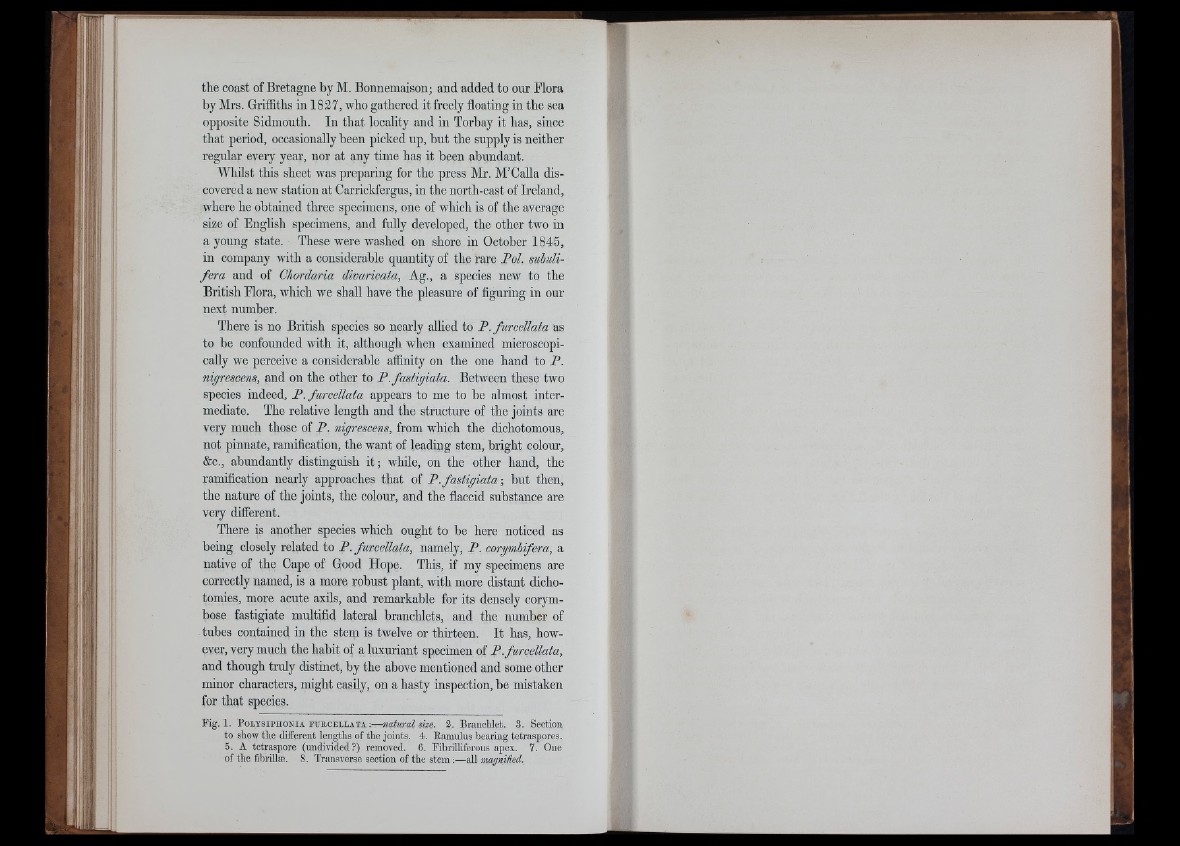
the coast of Bretagne by M. Bonnemaison; and added to our Flora
by Mrs. Griffiths in 1827, who gathered it freely floating in the sea
opposite Sidmouth. In that locality and in Torbay it has, since
that period, occasionally been picked up, but the supply is neither
regular every year, nor at any time has it been abundant.
Mdiilst this sheet was preparing for the press Mr. M’Calla discovered
a new station at Carrickfergus, in the north-east of Ireland,
where he obtained three specimens, one of which is of the average
size of Fnglish specimens, and fully developed, the other two in
a young state. These were washed on shore in October 1845,
in company with a considerable quantity of the rare Bol. subulifera
and of Chordaria divaricata, Ag., a species new to the
British Flora, which we shall have the pleasure of figuring in our
next number.
There is no British species so nearly allied to P. furcellata as
to be confounded with it, although when examined microscopically
we perceive a considerable affinity on the one hand to P.
nigrescens, and on the other to P. fastigiata. Between these two
species indeed, P . furcellata appears to me to be almost intermediate.
The relative length and the structure of the joints are
very much those of P. nigrescens, from which the dichotomous,
not pinnate, ramification, the want of leading stem, bright colour,
&c., abundantly distinguisb i t ; while, on the other hand, the
ramification nearly approaches that of P . fastigiata ■, but then,
the nature of the joints, the colour, and the flaccid substance are
very different.
There is another species which ought to be here noticed as
being closely related to P. furcellata, namely, P. corymbifera, a
native of the Cape of Good Hope. This, if my specimens are
correctly named, is a more robust plant, with more distant dichotomies,
more acute axils, and remarkable for its densely corymbose
fastigiate multifid lateral branchlets, and the number of
tubes contained in the stem is twelve or thirteen. It has, however,
very much the habit of a luxuriant specimen of P. furcellata,
and though truly distinct, by the above mentioned and some other
minor characters, might easily, on a hasty inspection, be mistaken
for that species.
Kg. 1. POLYSIPHONIA f u r c e l l a t a :—natural size. 3. Branchlet. 3 . Section
to show the different lengths of the joints. 4. Ramulus bearing tetraspores.
5. A tetraspore (undivided?) removed. 6. PibriUiferous apex. 7. One
of the fibrillae. 8. Transverse section of the stem ;—all magnified.
A